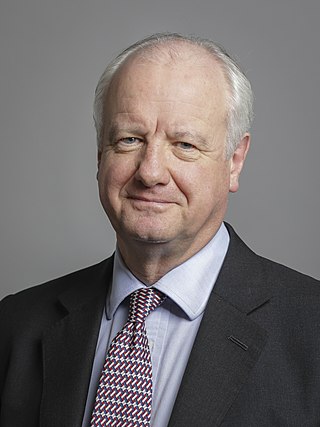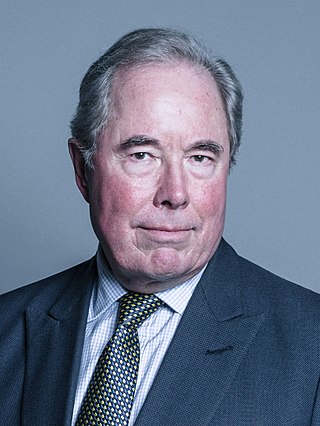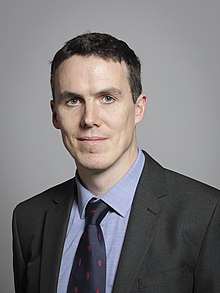
George Nathaniel Curzon, 1st Marquess Curzon of Kedleston,, styled Lord Curzon of Kedleston between 1898 and 1911 and then Earl Curzon of Kedleston between 1911 and 1921, was a prominent British statesman, Conservative politician and writer who served as Viceroy of India from 1899 to 1905.

The Peerage Act 1963 is an Act of the Parliament of the United Kingdom that permits women peeresses and all Scottish hereditary peers to sit in the House of Lords and allows newly inherited hereditary peerages to be disclaimed.

The House of Lords Act 1999 is an Act of the Parliament of the United Kingdom that reformed the House of Lords, one of the chambers of Parliament. The Act was given Royal Assent on 11 November 1999. For centuries, the House of Lords had included several hundred members who inherited their seats ; the Act removed such a right. However, as part of a compromise, the Act did permit ninety-two hereditary peers to remain in the House. Another ten were created life peers to enable them to remain in the House.

Viscount Scarsdale, of Scarsdale in Derbyshire, is a title in the Peerage of the United Kingdom. It was created in 1911 for the prominent Conservative politician and former Viceroy of India George Curzon, 1st Baron Curzon of Kedleston, who was created Earl Curzon of Kedleston at the same time and was later made Marquess Curzon of Kedleston.

Baron Trevethin, of Blaengawney in the County of Monmouth, is a title in the Peerage of the United Kingdom. It was created in 1921 for the prominent judge Sir Alfred Lawrence, Lord Chief Justice of England from 1921 to 1922.

Baron Ravensdale, of Ravensdale in the County of Derby, is a title in the Peerage of the United Kingdom. It was created in 1911 for the Conservative politician George Curzon, 1st Baron Curzon, of Kedleston, who had previously served as Viceroy of India.
Nicholas Mosley, 3rd Baron Ravensdale,, was a British peer, novelist and biographer, including that of his father, Sir Oswald Mosley, the founder of the British Union of Fascists.

Mary Irene Curzon, 2nd Baroness Ravensdale, Baroness Ravensdale of Kedleston,, was a British peeress, socialite and philanthropist.

Alastair John Lyndhurst Bruce, 5th Baron Aberdare,, is a British nobleman, and since 2009 a crossbench hereditary peer elected under the House of Lords Act 1999.

William James Robert Peel, 3rd Earl Peel,, styled Viscount Clanfield until 1969, is a British hereditary peer who was a Conservative peer from 15 May 1973 until October 2006 when, on his appointment as Lord Chamberlain of the Royal Household, he became a crossbench (non-partisan) member of the House of Lords.
There have been three baronetcies created for members of the Mosley family, one in the Baronetage of England and two in the Baronetage of Great Britain. Only one creation is extant. Since 1980, the title has been held jointly with Baron Ravensdale in the Peerage of the United Kingdom.

Nicholas Le Poer Trench, 9th Earl of Clancarty, 8th Marquess of Heusden, is an Anglo-Irish peer, as well as a nobleman in the Dutch nobility. Lord Clancarty serves as an elected Crossbench hereditary peer in the British House of Lords. His earldom is in the Peerage of Ireland.
By-elections to the House of Lords occur when vacancies arise among seats assigned to hereditary peers due to death, resignation, or disqualification. Candidates for these by-elections are limited to holders of hereditary peerages, and their electorates are made up of sitting Lords; in most cases the electorate are those sitting hereditary peers of the same party affiliation as the departed peer.

Simon Gordon Jared Russell, 3rd Baron Russell of Liverpool, is a British crossbench peer.

Roualeyn Robert Hovell-Thurlow-Cumming-Bruce, 9th Baron Thurlow, is a British hereditary peer and chartered surveyor who sits as a crossbench member of the House of Lords.

John Richard Boyle, 15th Earl of Cork and 15th Earl of Orrery is a British hereditary peer and a member of the House of Lords, where he sits as a Crossbencher. Boyle was an officer in the Royal Navy and then had a career in the sugar industry before inheriting his titles in 2003.

Richard Hubert Gordon Gilbey, 12th Baron Vaux of Harrowden, is a British hereditary peer and crossbench member of the House of Lords.

Rupert Francis John Carington, 7th Baron Carrington,, is a British banker, hereditary peer and crossbench member of the House of Lords.
Elections of the excepted hereditary peers were held in October and November 1999, before the House of Lords Act 1999 excluded most hereditary peers from the membership of the House of Lords allowing Earl Marshal, Lord Great Chamberlain and 90 others to remain in the House. Before the passing of the 1999 Act, the Lords approved a Standing Order stating that those 90 would consist of:















